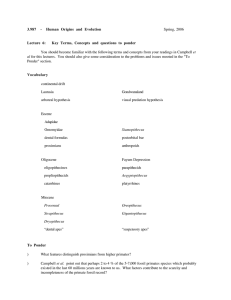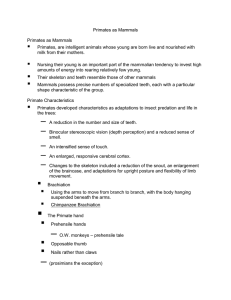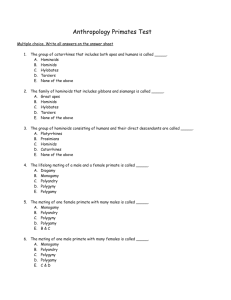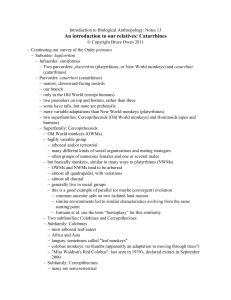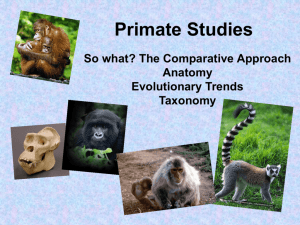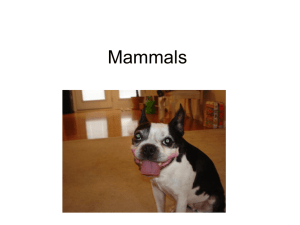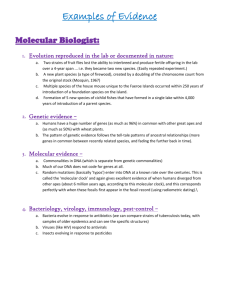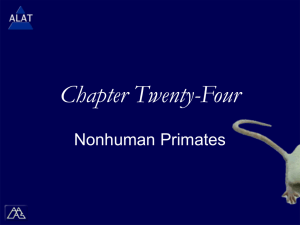Unit 3 Review
advertisement
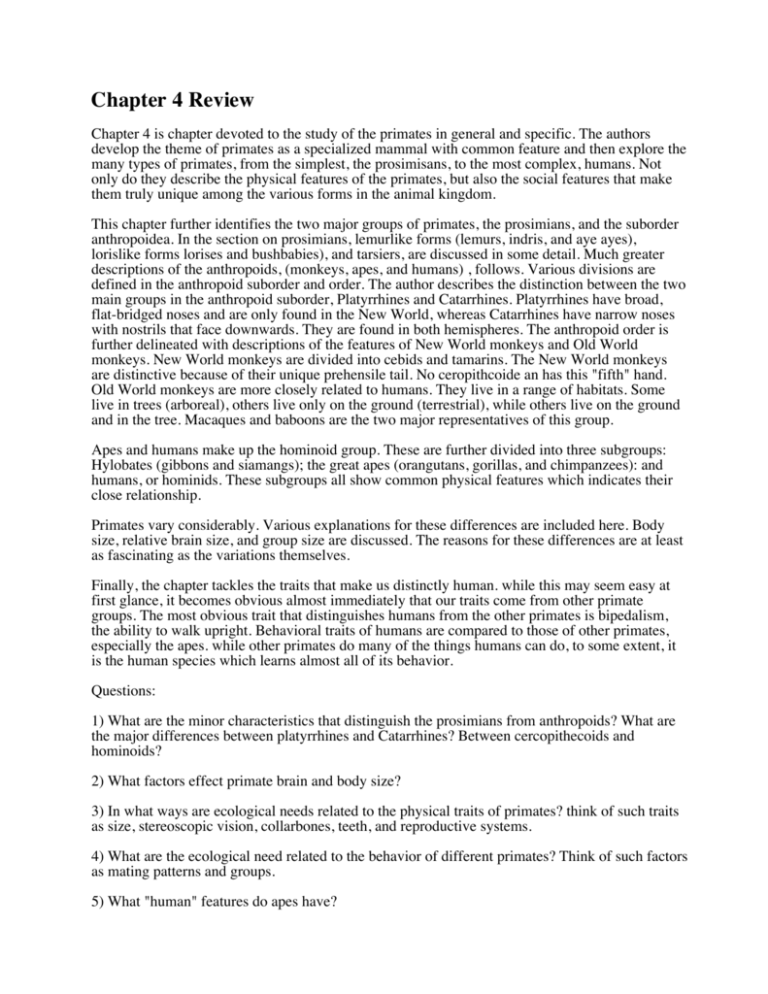
Chapter 4 Review Chapter 4 is chapter devoted to the study of the primates in general and specific. The authors develop the theme of primates as a specialized mammal with common feature and then explore the many types of primates, from the simplest, the prosimisans, to the most complex, humans. Not only do they describe the physical features of the primates, but also the social features that make them truly unique among the various forms in the animal kingdom. This chapter further identifies the two major groups of primates, the prosimians, and the suborder anthropoidea. In the section on prosimians, lemurlike forms (lemurs, indris, and aye ayes), lorislike forms lorises and bushbabies), and tarsiers, are discussed in some detail. Much greater descriptions of the anthropoids, (monkeys, apes, and humans) , follows. Various divisions are defined in the anthropoid suborder and order. The author describes the distinction between the two main groups in the anthropoid suborder, Platyrrhines and Catarrhines. Platyrrhines have broad, flat-bridged noses and are only found in the New World, whereas Catarrhines have narrow noses with nostrils that face downwards. They are found in both hemispheres. The anthropoid order is further delineated with descriptions of the features of New World monkeys and Old World monkeys. New World monkeys are divided into cebids and tamarins. The New World monkeys are distinctive because of their unique prehensile tail. No ceropithcoide an has this "fifth" hand. Old World monkeys are more closely related to humans. They live in a range of habitats. Some live in trees (arboreal), others live only on the ground (terrestrial), while others live on the ground and in the tree. Macaques and baboons are the two major representatives of this group. Apes and humans make up the hominoid group. These are further divided into three subgroups: Hylobates (gibbons and siamangs); the great apes (orangutans, gorillas, and chimpanzees): and humans, or hominids. These subgroups all show common physical features which indicates their close relationship. Primates vary considerably. Various explanations for these differences are included here. Body size, relative brain size, and group size are discussed. The reasons for these differences are at least as fascinating as the variations themselves. Finally, the chapter tackles the traits that make us distinctly human. while this may seem easy at first glance, it becomes obvious almost immediately that our traits come from other primate groups. The most obvious trait that distinguishes humans from the other primates is bipedalism, the ability to walk upright. Behavioral traits of humans are compared to those of other primates, especially the apes. while other primates do many of the things humans can do, to some extent, it is the human species which learns almost all of its behavior. Questions: 1) What are the minor characteristics that distinguish the prosimians from anthropoids? What are the major differences between platyrrhines and Catarrhines? Between cercopithecoids and hominoids? 2) What factors effect primate brain and body size? 3) In what ways are ecological needs related to the physical traits of primates? think of such traits as size, stereoscopic vision, collarbones, teeth, and reproductive systems. 4) What are the ecological need related to the behavior of different primates? Think of such factors as mating patterns and groups. 5) What "human" features do apes have?
